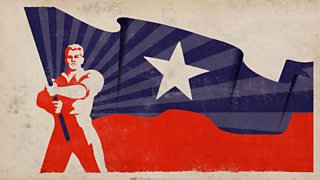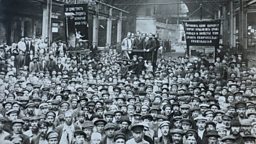Why is the anniversary of the October Revolution in November?

This November, Radio 3 marks the 100th anniversary of Russian’s October Revolution (AKA Red October and The October Uprising) with a day of programmes exploring the consequences of this momentous moment in history.
Hang about. An October centenary – in November?
Yes, you read that right. The fact is, while the events of the October Revolution did start in Petrograd on 23 October 1917, they happened in the October of a different era.
A century ago, dates in Russia were calculated according to the Julian calendar, a system dating back to 45 AD. Most of the rest of Europe, however, was using the Gregorian calendar, an updated version of the Julian calendar first introduced in 1582 by Pope Gregory XIII.
Easter was at the heart of these changes. Even back in the 16th century, it had long been known that the Julian calendar contained a small miscalculation which put it out of kilter with the mathematical solar year by around 11 minutes.
That may not sound like much, but over time, those extra minutes mounted up. By the late 16th century, it was clear that Easter, and its traditional celebration date around the time of the Spring Equinox, was straying dangerously far from 21 March.

It was a doctor and astronomer, Aloysus Lilius, who developed a solution to the Church’s time troubles.
The Julian calendar already incorporated leap years – where an extra “intercalary” day is added in February once every four years – but Lilius refined this rule. Under his new system, leap years would still occur in years divisible by four except in years that were divisible by 100, but not by 400. (That’s why the year 2000 was a leap year – but 1900 wasn’t, and 2100 won’t be.)
Some people reportedly worried that the changes meant their lives would be shortened
Generally speaking, it was a pretty good hack, but adopting the new calendar still required some days to be jettisoned altogether. And that’s what happened in 1582. The Papal States simply dropped ten days and moved on. The changes were gradually adopted across Europe, first by Catholic countries, but then by others too.
Great Britain was fairly late to the party and only formally adopted the new calendar in 1752 – and even then, under some duress. Some people felt that the new, “Popish” calendar was part of a Catholic plot to undermine Protestant reform. (It wasn’t.) Others reportedly worried that the changes meant their lives would be shortened by 11 days.
Eastern Orthodox nations, including Russia, were among the last European countries to adopt the new calendar. After the 1917 revolution, it didn’t take long for Russia to align itself with “new style” dates.

On 24 January 1918, the Council of People's Commissars announced that the Russian Soviet Federative Socialist Republic would jump straight from Wednesday 31 January to Thursday 14 February, thus bringing the nation in line with its neighbours – and making all Russians 13 days older overnight.
And that’s why the anniversary of Russia’s 1917 October Revolution is in November. It’s funny to think that Russians with birthdays in early February simply didn’t have them in 1918. Still, with their country in the grips of an almighty political flux, they probably had other things on their minds...
BBC Radio 3 explores the aftermath of the Russian Revolution on 7 November with a range of fascinating programmes including Breakfast's live broadcast from St Petersburg’s historic Mariinsky theatre.
It’s all part of Breaking Free: A Century of Russian Culture – a season exploring the momentous cultural impact of the Russian Revolution. Browse all programmes, clips and features on the Radio 3 website.
-
![]()
Breaking Free: A Century of Russian Culture
Browse all programmes, music, clips and features from this fascinating season on BBC Radio 3.
-
![]()
Emigranti: 1917 Revisited
How do Russia's latest cultural émigrés feel about leaving their homeland?
-
![]()
Ten artists that shook the world
From artists to cinematographers and dancers, these visionary Russian artists changed everything.




